by Melody Kemp
“It was nine at night and the shooters had the advantage of superior fire power and night vision goggles …. We stood no chance. Two friends were killed…”
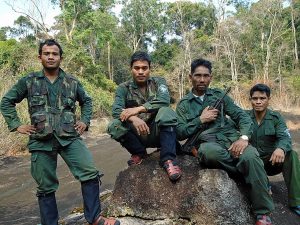
David Paklett, a Wildlife Ranger working in Tanzania pulled up his trouser leg and showed me an ugly red scar that looked a bit like an alien pasted to his skin. It was 2013. We were in Spain’s ancient university town of Salamanca, at WILD 10, a sporadic gathering of wilderness and conservation specialists. He told me how the year before, he and his colleagues had been in a John Woo style shoot out with Vietnamese poachers. The Vietnamese were overhead in a helicopter, firing at them with automatic rifles. ‘It was nine at night and the shooters had the advantage of superior fire power and night vision goggles.’
His words have stayed with me.
‘We stood no chance. Two friends were killed, and I got this.’ When I looked up, his eyes had the look of someone who was looking back with horror. ‘Did you ever talk about that night with anyone?’ I asked sipping a Rioja red. ‘Who is there to tell?’ David grimaced. ‘It’s part of the job. The game has changed. The Chinese are arming these guys and making sure they get away with the kill. The forces behind them are so powerful and we have no resources.’
Lao Rangers in the Annamite mountain range report the same fear according to Bill Robichaud. ‘Camera traps showed these guys (poachers) to have the latest technology, to be well dressed and armed, with modern communication and GPS gear.’
David’s response flagged three major issues. Personal safety, psychological distress which can verge of post-traumatic stress disorder (PTSD), and the imbalance of resources. What stood out though is that an occupation so dangerous, with a high fatality rate, has been largely overlooked as an occupational health and safety (OHS) priority. Climate change can only add to its danger. The Rangers’ workplaces are the world’s exposed global plains and jungles, mountains and rivers.
A 2016 report on ranger insurance dedicated itself to the ‘at least 107 Rangers (who) have lost their lives in the line of duty in the last year. Sadly, in the days that it takes for this to go to print, more will be added to this list. In fact, we know of more than 1000 rangers who have paid the ultimate sacrifice for wildlife in the past 10 years. The majority of these rangers are murdered by poachers; followed by deaths in work-related accidents involving the terrain they operate in; and sometimes… the very animals they protect.’
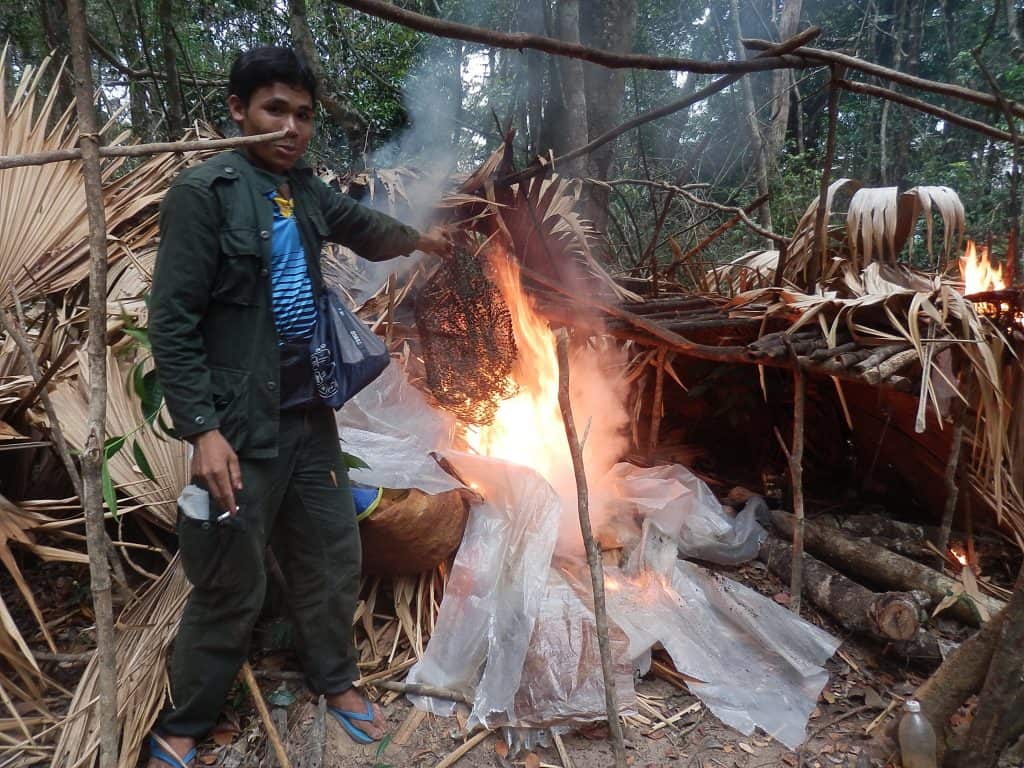
While their brothers and sisters in parallel services, like police and military, are given all the good resources some taking on a sinister robotic look to deal with sporadic discrete situational disturbances, environment Rangers face diffuse and equally unpredictable threats with often nothing more than factory outlet camouflage and thongs. Some are armed, many not.
Since Tom Lehrer bragged he shot ‘Two Game Wardens, Seven Hunters and a Cow’, being a Ranger, Wildlife Protection Officer, Forest Ranger or one of the many other names by which Environmental Protection Officers are called, has become significantly more dangerous. David’s words also highlighted the role of greater global wealth, particularly in China, confiding that investigations revealed they used untouchable diplomatic channels to export the products of poaching. Wealth also spurs the growth of hunting and trophy-ism, all of which push species (including trees) closer to extinction, in turn driving their price (and desirability) up… along with risks to Rangers.
High powered weapons can be purchased easily on the global e-market, along with Global Positioning System (GPS) and communications equipment. Organised crime, always on the lookout for income generating activities such as the invention of spurious traditional medicines, supported by political elites, have given poachers a level of protection that increases risks for the men (and the very few women) whose job it is to defend nature, where even the terrain constitutes a hazard. ‘You are killed by the terrain’ an African ranger told William Moreto a criminologist assisting World Wildlife Fund conduct the first systematic research into rangers’ working conditions in Africa and Asia. Unfortunately requests for information about Australian Rangers did not respond for this story.
Contrary to romantic images of Rangers sitting contentedly, while giraffes stride into a glowing sunset on the Serengeti, it’s a wild tale of unpredictability, violence and privation tinged with culturally determined factors –
‘many Rangers discussed their apprehension at being attacked, poisoned, bewitched or falsely accused by community members.’
Or,
‘Cambodian Rangers can be killed by shootouts between rival drug gangs.’
I was told by an experienced Ranger teaching Lao counterparts on the Lao Cambodian border.
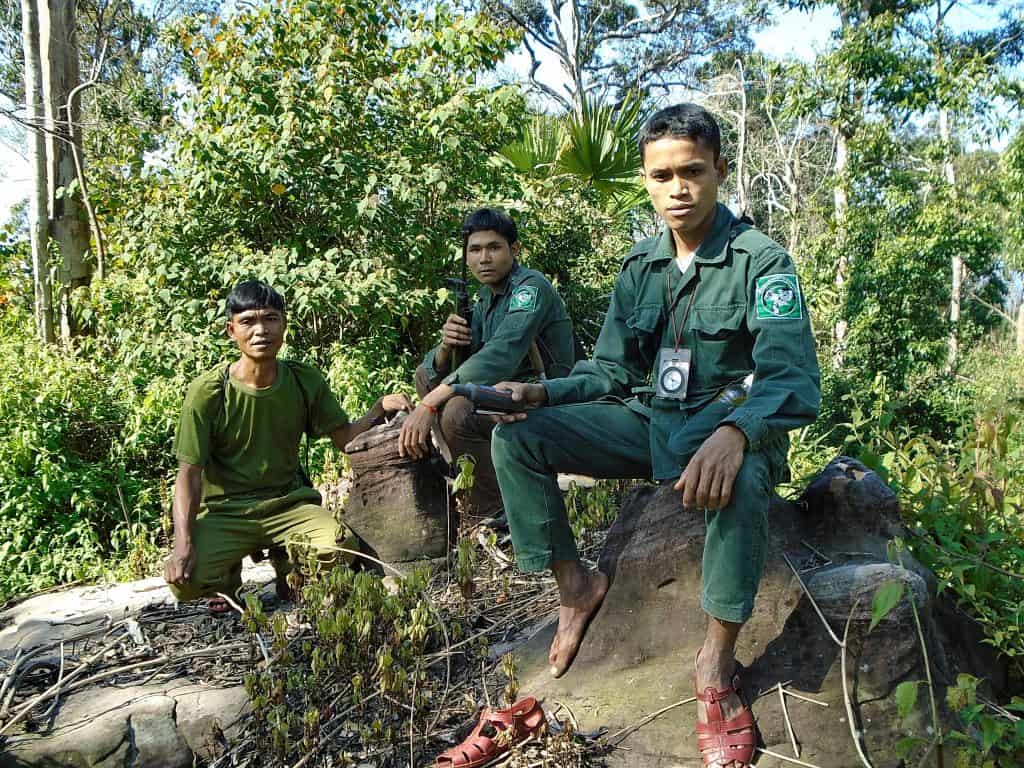
The killing of two Rangers in Spain a year ago indicated this is not just an issue for nations typically associated with wildlife crime. So it’s remarkable that these men and women (in Asia only 3% are women while in Africa 19% are women, referenced elsewhere), being largely out of sight, seem to have been also out of mind in health and safety terms.
Those interviewed (and I am not at liberty to disclose who they all were) agreed that nowhere near enough recognition is given to the OHS of Rangers. ‘A combined change of attitude is needed throughout the ranks; individuals through to policy makers,’ was the general feeling. The world’s protected forests and wildlife are dependent on this.
This report is by no mean conclusive. It rather attempts to present some of the issues from a ranger’s perspective.
Getting Physical
Over 80% of African Rangers and 63% of those in Asia report having been in a life-threatening situation.
Lawrence Munro, a senior African ranger guarding Rhinos, explained:
“Everything changes when you work in this field. Everything. The car you drive, the clothes you wear, the company you keep, your social habits.” Munro keeps a lot of his work secret, and won’t reveal to his family anything that can endanger their lives. “It creates lots of stress at home. I don’t want to worry my family. It’s not easy. I feel like I’m constantly in a war.”
Ben, a ranger adviser in Lao, told me that, in the uplands, communication was often impossible. ‘We might have to walk for five hours to get a mobile signal, then the emergency service has to get in; at which point any injured ranger has died.’ While informants told me that Rangers in their care received first aid training, major trauma such as head injuries, major fractures, gun shots or bites might not be amenable to Band Aids. In Laos additional risk comes from the many unexploded munitions (UXO) left behind by the US war on Vietnam. Wildlife hot spots like the Annamite Range are also hotspots for UXO.
Ranger safety is a complicated picture, as the work is sometimes dependent on the organization they work for. For instance if the activities are funded by an international NGO like World Wildlife Fund (WWF) or World Conservation Service (WCS) incidents are the responsibility of the NGO’s Human Resources manager.
Others ‘are government employees and fall under their own agencies regulations, which admittedly usually don’t exist.’
That is, there appears to be no overarching international laws or regulations or Codes to protect Rangers. But maybe that is just as well. Take footwear. I remarked to Ben that the Rangers photographed are wearing plastic sandals.
“We tried to get them into boots but most of them have been farmers and never worn shoes in their lives. Boots gave them blisters and open wounds. They complained they mostly walk in rivers, so boots are simply impractical. They get wet, lead to foot rot, and soon fill with leeches. We settled on canvas shoes and sandals, so they pick the leeches off.’
The undercover nature of their work sometimes mitigates against public disclosure. Many Rangers are themselves hunted in revenge or are simply in the way. ‘As you are looking for them, they are looking for you,’ one ranger told Moreto. Even informers cannot be trusted and can lead Rangers into traps.
Another legal adviser to the Lao government told me ‘In 1998 the park managers at Kaziranga National Park in India reported high rates of alcoholism and suicide amongst Rangers due to the policy to shoot poachers on sight. Rangers from the local area were killing people they knew; neighbours. The park manager reported that it was a “good year” because they had only killed 32 poachers, the previous year was 57. That may be too anecdotal for you.”
[More statistics on Ranger deaths can be found at the Honour Roll administered by the International Ranger Foundation. Ed]
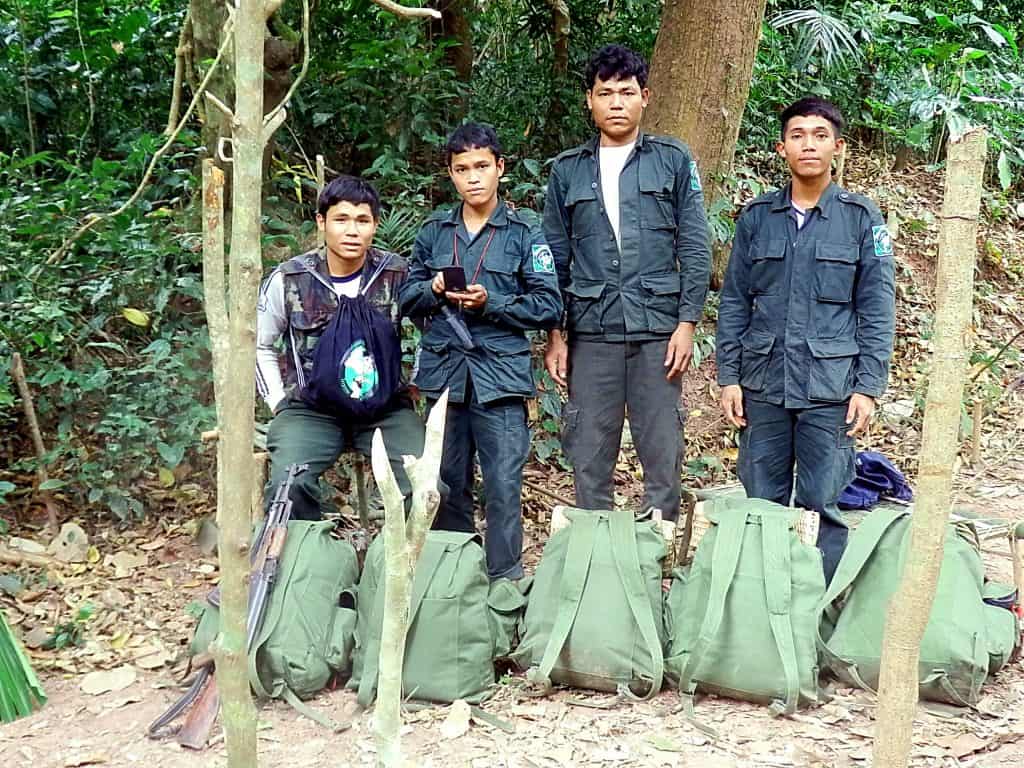
I was told that WWF had complained that Lao Rangers in a remote placed called Se San had not made any arrests. ‘They couldn’t tick that box. So I went south to check what was happening,’ ex Royal Marine and law enforcement adviser me, ‘The region they patrolled was on the Vietnamese border. They could only get into their policing area by crossing the border into Vietnam, where they had to surrender their weapons and had no power of arrest. WWF thought that just because they had three days training they could perform miracles but had no understanding of the logistical nightmare these guys face.’
Going nuts
At a Lao party I met a ranger recently returned from Myanmar. As he recounted stories of finding elephants skinned and dismembered, his eyes brimmed. Taking a breath, he left to get another drink. One of my major informants is teetotal as he fell into that trap. Wildlife care can do that.
Rangers surveyed by WWF agreed that despite the majority only seeing their family around five days per month, they would prefer them to remain at distance (Moreto). Along with security risks parks or protected areas don’t have schools or health facilities and many do not even have water sources: “We are in the bush where it’s hard to access water,” and because some don’t have transport, carrying water becomes a huge burden. ’Life is not easy. We are deep in the forest, isolated from people and things.’
Moreto found accommodation was sometimes not fit for human habitation and many complained that first aid and health facilities were missing, or totally inadequate.
‘Armed poachers stress us out.’
‘We can’t trust anyone to help.’
‘We spend many nights camped out never seeing our families.‘
‘I am on duty 24 hours a day and the pay is lousy.’
‘I am terrified of being injured. What do I do? We have no facilities and the nearest hospital is very far.’
‘ I have been attacked by an elephant.’
‘I have been attacked by villagers when an elephant destroyed their crops.’
‘A gun is not enough, we need better training and resources.
‘I don’t think people care.’
‘We cannot grow food, so I am always hungry.’
‘We can’t cook on patrol as the poachers will spot our smoke, even if we had water to cook with.’
‘Management promotes their friends/tribespeople/relatives.’
‘The pay is so bad I think it’s better if I join the poachers.’
The last situation happens all too frequently. ‘A ranger was killed yesterday.’ Crispian Barlow told me. ‘Oh I am sorry’ I responded. Don’t be,’ he growled. ‘He’d joined the poachers.’
Solutions?
There is no unified hazard profile and risk assessment is specific to location and situation. As with boots, prescriptive solutions from one (Western) perspective are also not useful. It’s also clear that Rangers love their work and would recommend their children follow them. Protecting nature is a powerful motivator and most would do nothing else.
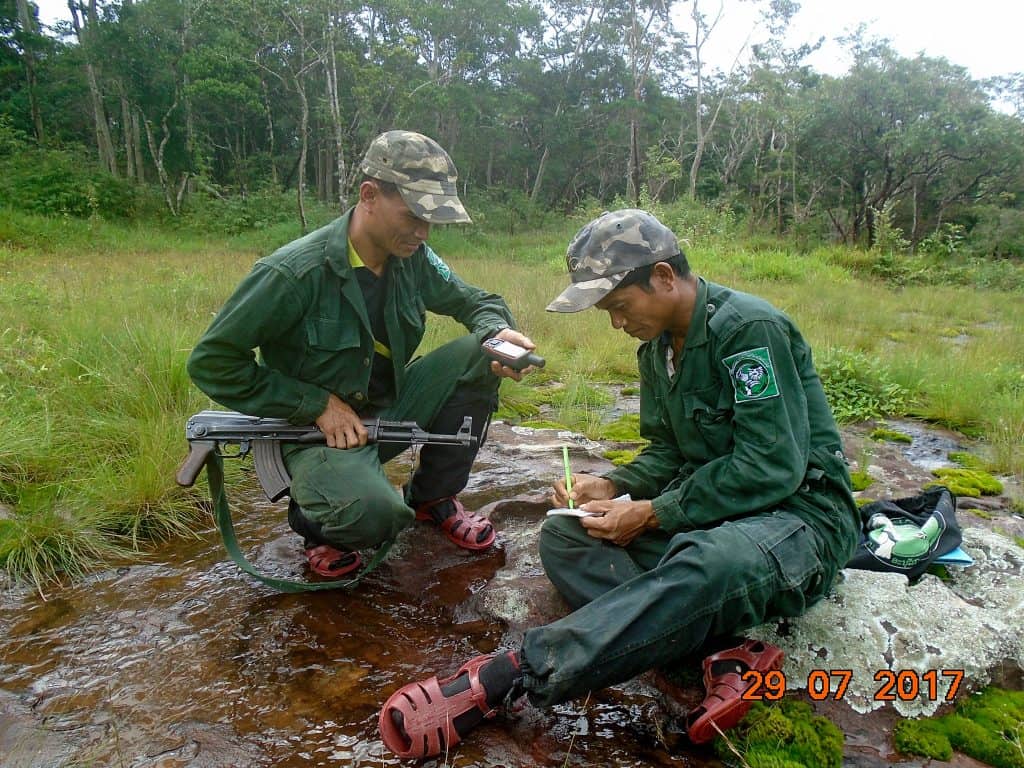
One ranger adviser suggested that training and equipment for dealing with emergencies is desperately needed, as is follow-up training and communications support. But that assumes they are full-time and have status worthy of such inputs. One source suggested that because ‘they are casual and low pay, considered unskilled and patrol far from the eyes of HQ,’ they are below the radar.
This obviates workers compensation in nations where it exists, though this is a priority need. National laws which encompass ranger’s safety and support rather than undermine the rule of law were also mentioned. Trade unions and associations like the newly formed Federation of Asia can be of huge benefit, but only if nations, like Lao, recognize them as independent and not tied to government control.
Everyone agreed that the ILO should be involved, and I understand that they are initiating cooperation, but the ILO is limited by its donor led status and dependent on them for funds, so will need donors to agree to contribute significant funding for training resources, many of which may not be useful without the active involvement of Rangers themselves.
Ben told me that the Rangers under his care ‘do an amazing job despite all they are up against. They could do with support and accolades. It’s one of the hardest jobs in the world.”
Ranger Diary Notes
On patrol. Completely exhausted thousand-metre mountains with 600 metres covered in greasy yellow clay, trees covered in spines, vines at neck height covered in thorns. My eyeballs are sweating with incessant rain and humidity. Leeches and mosquitoes get into every bit of skin even my ears. No paths. The Lao forest guards just follow a compass line which means you spend all you time trying to stop falling on your arse and onto bamboo spears My knees feel like they have daggers in them, and I don’t have the energy to lift my legs to avoid the creepers. Breakfast is boiled duck guts with chilli and congealed ducks blood with cabbage. No matter how much water I drink, I am always thirsty and I have cramps like golf balls in my legs. My pack is sodden so weighs twice as much and it keeps bloody raining…
Crispian Barlow,Wildlife Law Enforcement Officer, WWF, Laos
AUTHOR:
Melody Kemp is an Australia safety advocate, writer and educator who has resided in Laos for many years. She is the author of Working For Life – an OHS sourcebook for women and has written previously for SafetyAtWorkBlog, and an earlier magazine version of the blog.
Melody was commissioned to produce this article.
